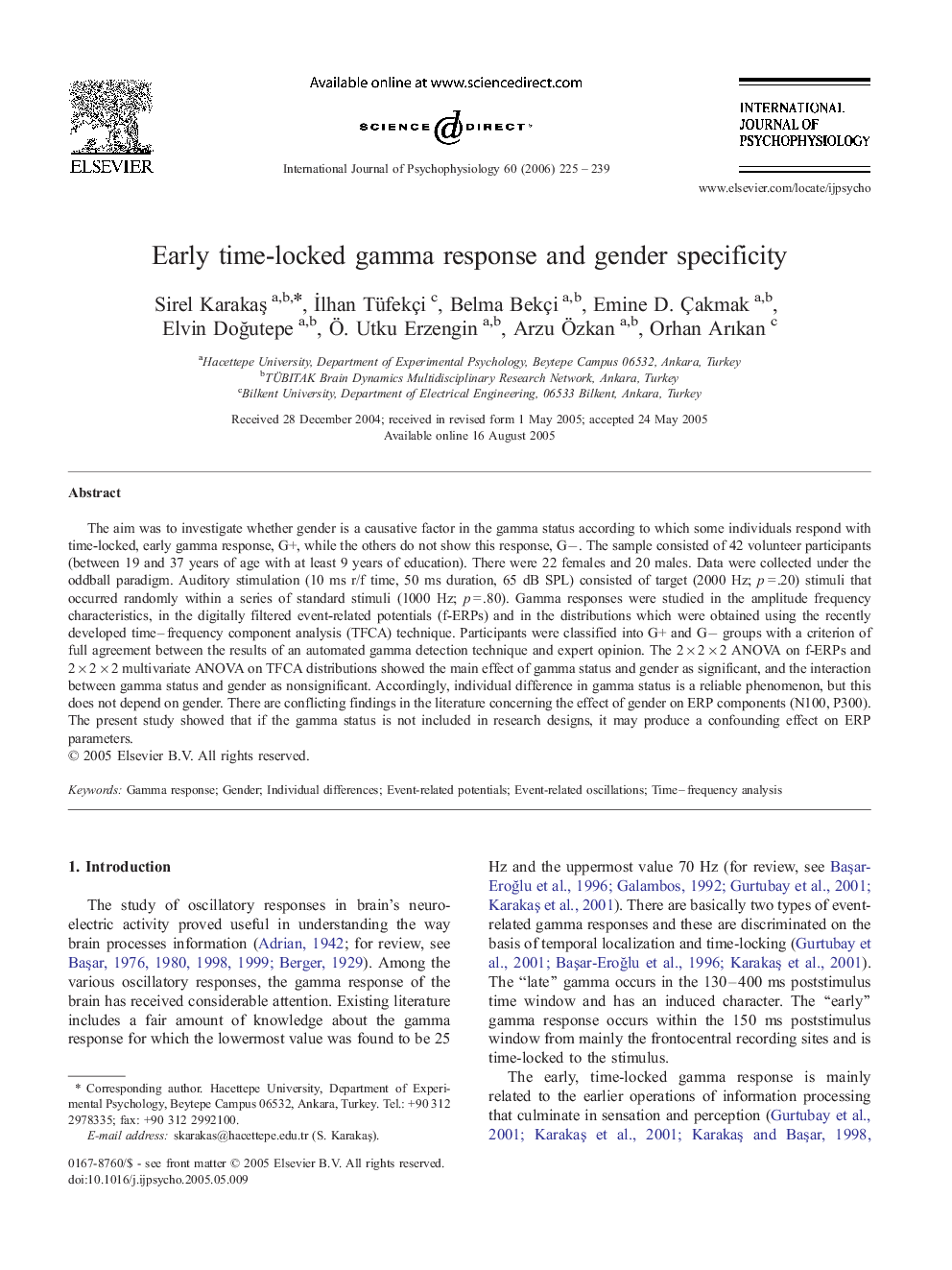| کد مقاله | کد نشریه | سال انتشار | مقاله انگلیسی | نسخه تمام متن |
|---|---|---|---|---|
| 931195 | 1474514 | 2006 | 15 صفحه PDF | دانلود رایگان |

The aim was to investigate whether gender is a causative factor in the gamma status according to which some individuals respond with time-locked, early gamma response, G+, while the others do not show this response, G−. The sample consisted of 42 volunteer participants (between 19 and 37 years of age with at least 9 years of education). There were 22 females and 20 males. Data were collected under the oddball paradigm. Auditory stimulation (10 ms r/f time, 50 ms duration, 65 dB SPL) consisted of target (2000 Hz; p = .20) stimuli that occurred randomly within a series of standard stimuli (1000 Hz; p = .80). Gamma responses were studied in the amplitude frequency characteristics, in the digitally filtered event-related potentials (f-ERPs) and in the distributions which were obtained using the recently developed time–frequency component analysis (TFCA) technique. Participants were classified into G+ and G− groups with a criterion of full agreement between the results of an automated gamma detection technique and expert opinion. The 2 × 2 × 2 ANOVA on f-ERPs and 2 × 2 × 2 multivariate ANOVA on TFCA distributions showed the main effect of gamma status and gender as significant, and the interaction between gamma status and gender as nonsignificant. Accordingly, individual difference in gamma status is a reliable phenomenon, but this does not depend on gender. There are conflicting findings in the literature concerning the effect of gender on ERP components (N100, P300). The present study showed that if the gamma status is not included in research designs, it may produce a confounding effect on ERP parameters.
Journal: International Journal of Psychophysiology - Volume 60, Issue 3, June 2006, Pages 225–239